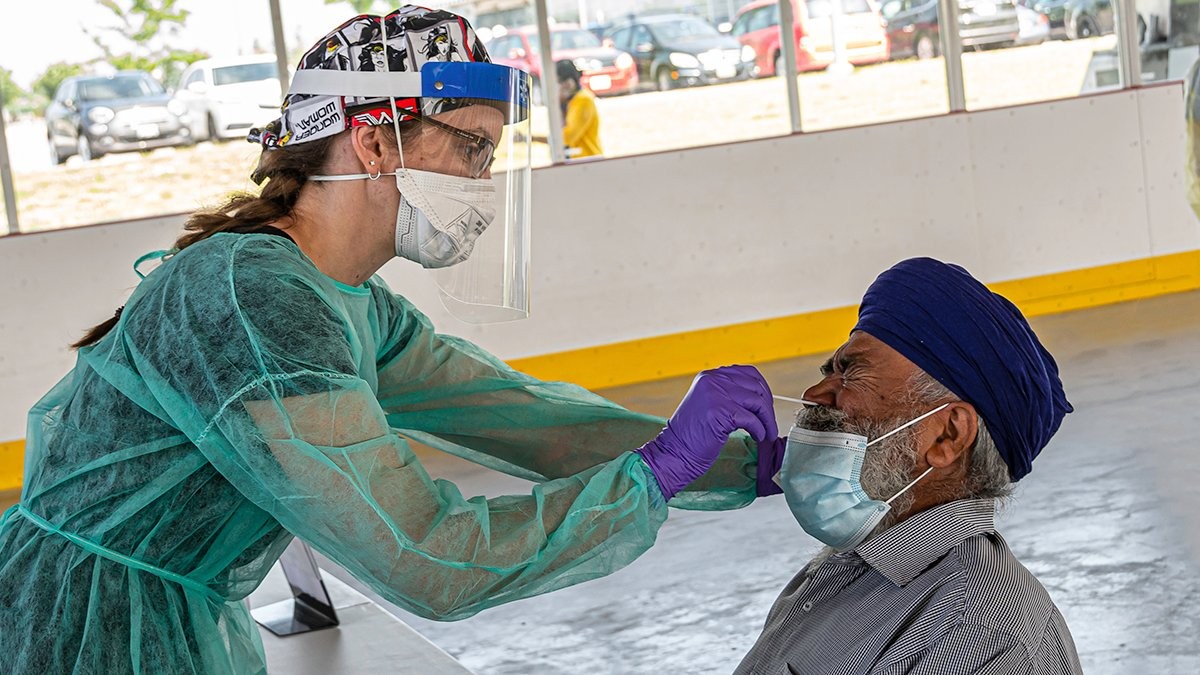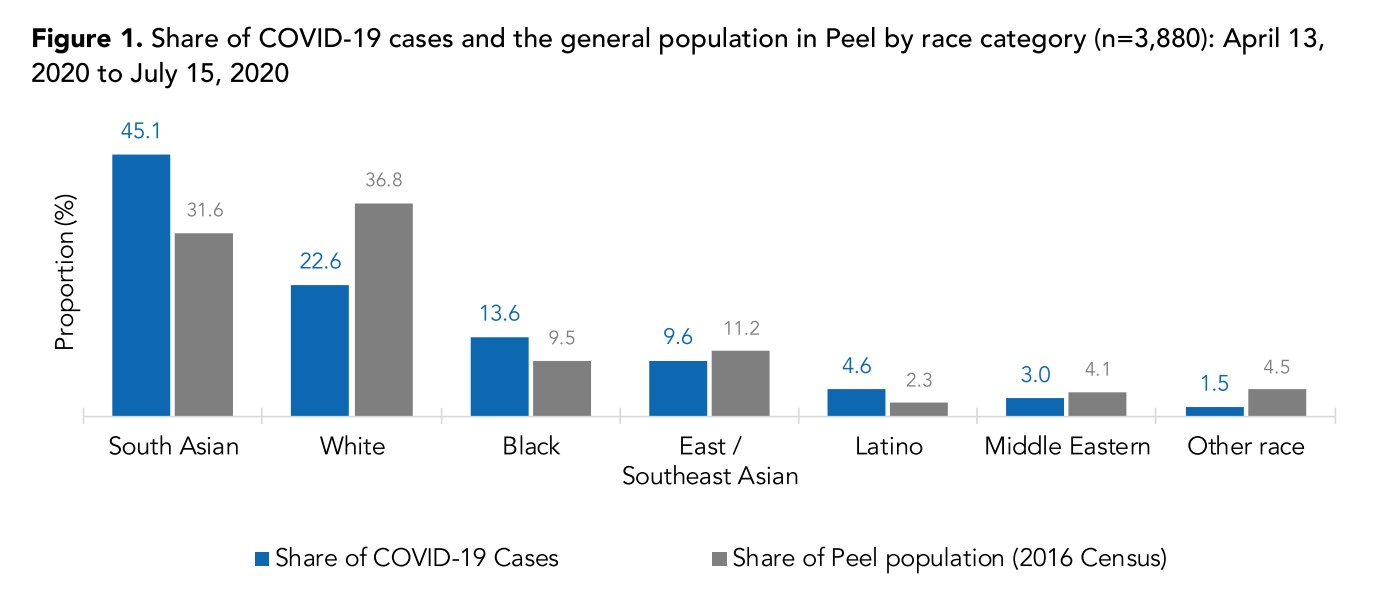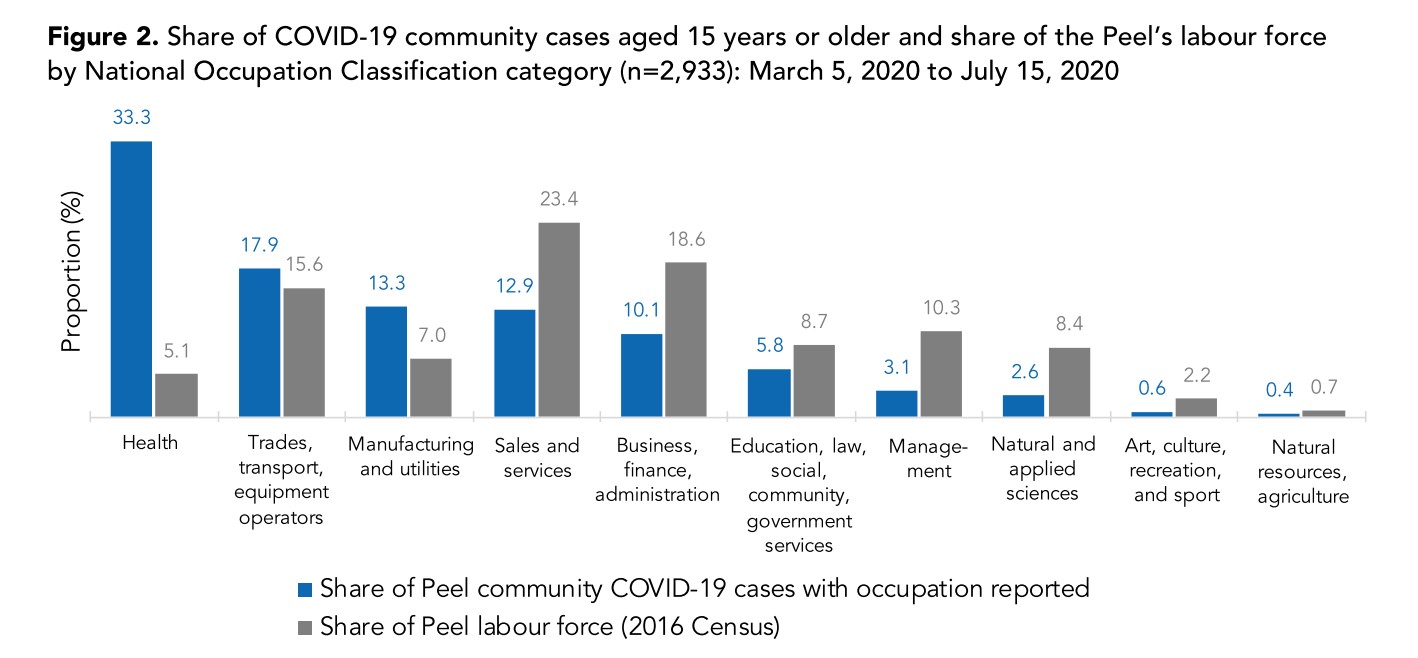
Visible minorities in Peel suffering disproportionately from COVID-19
Data from Peel Public Health shows visible minority populations in the region disproportionately contracted COVID-19, compared to white residents in the region.
Throughout April 13 to July 15 there were 3,880 cases of COVID in Peel. Visible minorities make up 63 percent of Peel’s population but accounted for 77 percent of the cases, according to data released by the Region of Peel.
South Asian-Canadians make up 31.6 percent of the population but accounted for 45.1 percent of the COVID cases. Black residents make up 9.5 percent of the general population but account for 13.6 percent of the positive cases.
In contrast, 36.8 percent of Peel’s population identify as white but they only accounted for 22.6 percent of the COVID-19 cases during the same period.

East/Southeast Asian-Canadians are 11.2 percent of the region’s population but only 9.6 percent of those who tested positive for COVID-19. Latino-Canadians and Middle Eastern-Canadians and those who identify as other such as Indigenous or First Nations also had higher representation in the total number of infected individuals compared to their share in the general population.
The data collected shows visible minorities in Peel are more likely to get COVID-19 than those who identify as white. Those who worked in a higher risk environment or couldn’t work from home were more likely to contract the virus.
Experts around the world have pointed to similar data, as immigrant populations that have not yet secured an economic footing in regions across numerous countries have contracted the virus at much higher rates than the rest of the population in their jurisdiction. On top of the inability to work from home and the need to perform essential labour, the lower socioeconomic reality is correlated with living conditions that are often more dense, with many more people per square kilometre in such neighbourhoods.
Higher risk jobs were deemed essential throughout the pandemic; examples are those in healthcare, grocery store workers, transportation, sanitary workers and factory jobs like the food industry.
Between March 5 and July 15 there were 5,652 positive cases of people aged 15 or older in the region. Of these, 2,933 (52%) reported their occupation. Each case was categorized by different industries using the National Occupational Classification system.
The highest risk occupation which accounted for 33.3 percent of COVID-19 cases in Peel during this period worked in the health industry. In Peel, the industry only accounts for 5.1 percent of those in the workforce, meaning residents employed in settings such as hospitals were vastly overrepresented in Peel’s overall case counts.

Those in trades, transport and equipment operators make up 15.6 percent of Peel’s population and 17.9 percent of the COVID cases. A large part of Peel’s workforce is employed in sales and services, 23.4 percent of the total labour base, but only accounted for 12.9 percent of the total cases.
Jobs that allowed most employees to work from home made up a much smaller portion of the COVID cases in the Region. Those in education, law, social and community work, government and management positions represented only 8.9 percent of the cases, but they make up 19 percent of the total population.
Similar to Peel, Toronto also reported higher case numbers among its visible minority populations. A recent report shows those who are racialized and low income are more at risk of contracting COVID-19. Those in Toronto, like Peel, who identify as white or are higher up on the socioeconomic ladder, were underrepresented in total COVID-19 case counts.
Toronto’s report covers cases from May 20 to July 16 which accounts for 3,861 COVID-19 infections. Toronto has a smaller portion of visible minorities than Peel but they still make up the majority, as 52 percent of the city’s population is racialized. Disproportionately, 83 percent of cases during this period involved members of racialized groups, and Black residents made up the largest sub-group. They make up 9 percent of Toronto’s population but represent 21 percent of its COVID-19 cases, based on the data.
South Asian-Canadians or Indo-Caribbean-Canadians make up 13 percent of Toronto’s total population but account for 20 percent of COVID-19 cases. Followed closely behind is the Southeast Asian-Canadian population, which makes up 7 percent of the city but 17 percent of COVID-19 cases.
In Toronto, 48 percent of the population identify as white but they only made up 17 percent of all cases throughout the period.
Toronto’s Arab-Canadian, Middle Eastern-Canadian and West Asian-Canadian population make up 11 percent of the cases but only represent 4 percent of the total population.
Toronto also collected data on household income of those infected which shows the advantages of those who earn more.
Of the 2,279 people who shared their income, 51 percent of them were considered to have a low income. Those who earned $29,000 or less made up 27 percent of the city’s cases. Those who earned between $30,000 and $49,000 made up 26 percent. In Toronto, 21 percent of the city earns $150,000 or more and they make up the smallest group among those who have tested positive, at only 6 percent, less than a third of their overall representation in the general population.
It really does pay to be rich.
Data such as this shows a stark contrast in the socioeconomic reality in both regions, underscoring the need to address everything from education to healthcare and employment safety through a cultural lens.
Email: [email protected]
Twitter: taasha__15_
COVID-19 is impacting all Canadians. At a time when vital public information is needed by everyone, The Pointer has taken down our paywall on all stories relating to the pandemic and those of public interest to ensure every resident of Brampton and Mississauga has access to the facts. For those who are able, we encourage you to consider a subscription. This will help us report on important public interest issues the community needs to know about now more than ever. You can register for a 30-day free trial HERE. Thereafter, The Pointer will charge $10 a month and you can cancel any time right on the website. Thank you.
Submit a correction about this story


